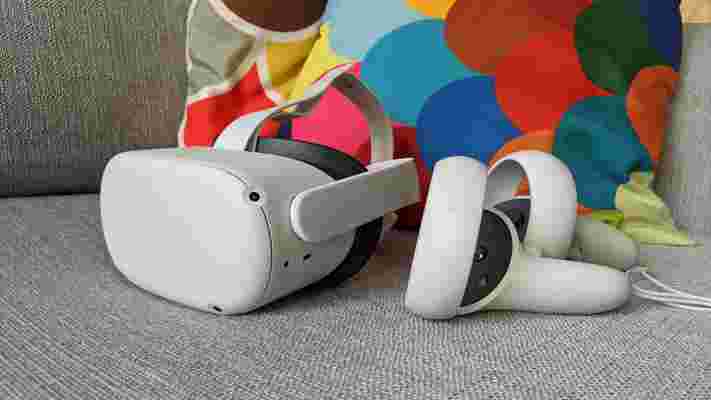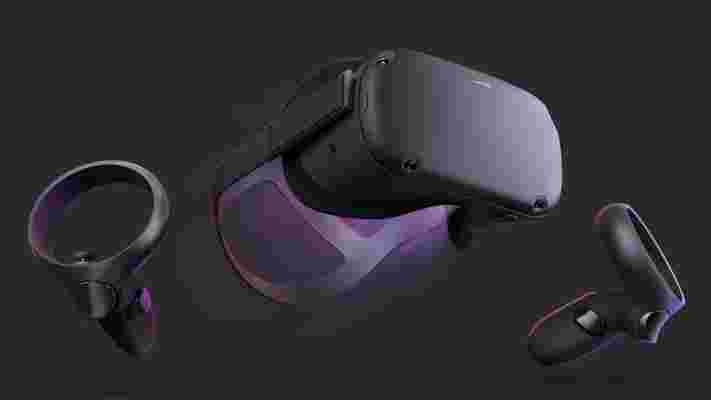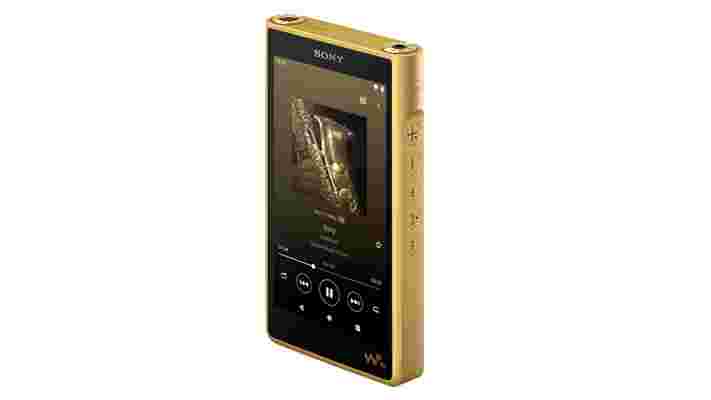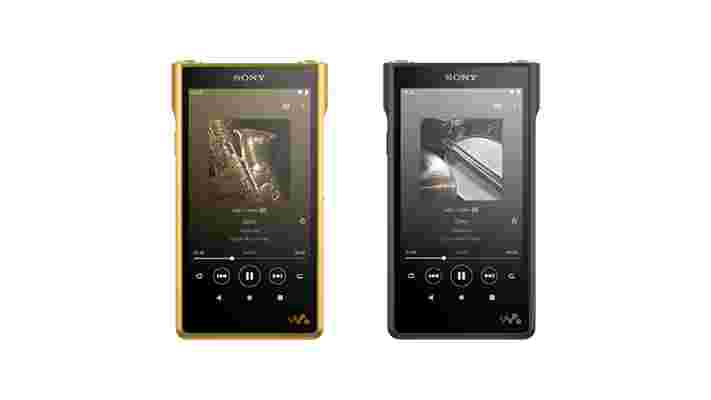The first image we've seen from the James Webb Space Telescope has been released by NASA, but don't get too excited just yet.
The image, which NASA published online on Friday , shows the star HD 84406 as seen from each of Webb's 18 primary mirror segments. At the moment, those segments are not in alignment with each other, so the image effectively shows a single star from 18 different angles.

The challenge is to align each mirror segment so that the star it sees perfectly aligns with the star as seen from the other mirrors – essentially, aligning the mirrors until 18 stars become a single, perfectly overlapping image.
The instrument used to image the star, the Near Infrared Camera (NIRCam), is one of four light collecting instruments on the Webb telescope, and the test image serves two purposes.
First, it confirms that light is passing through the entire telescope to the NIRCam sensor, which shows that the telescope actually works. Second, it provides the starting point for the telescope alignment.
As the telescope cools down, we'll hopefully get more images throughout the process as NASA works to aligned each mirror segment in nanometer increments, a process that is expected to take a few months.
Analysis: it's working!

While the first image we've gotten from Webb might not look like much, it's a really big deal. First, it shows the challenge ahead of having to line up each mirror correctly to get the actual images we're looking forward to getting in a few months time.
But most importantly, it shows that light is passing through the entire instrument as it should. While there are three more sensors that need to be tested in the weeks ahead, once the mirrors are aligned, Webb will at least be able to give us much clearer images than we've ever gotten in the near infrared spectrum, which will in itself be a huge boost for astronomy.
"The entire Webb team is ecstatic at how well the first steps of taking images and aligning the telescope are proceeding," Marcia Rieke, principal investigator for the NIRCam instrument and regents professor of astronomy, University of Arizona, said in the NASA update. "We were so happy to see that light makes its way into NIRCam."
While the more sensitive, deeper infrared spectrum instruments are what really make Webb the important astronomical tool that we hope it will be, knowing that light is making it to the instruments is exciting news indeed.
Oculus Quest 3: everything we know so far
A lot has changed for Oculus in the last few months: not least the fact that the company is now called Meta . On top of that, plans to launch the Oculus Quest 3 now look to be delayed thanks to the announcement that Meta's working on an entirely different VR device.
Dubbed Project Cambria , this new headset IP is designed to introduce users to groundbreaking VR technology that will help establish the earliest days of Meta's aptly-named (but potentially overambitious) metaverse project .
So, where does that leave the Oculus Quest 3?
Well, Meta has clarified that development is still underway on the next generation of its more budget-friendly VR headsets, which spells good news for those worried that Project Cambria might have condemned the Quest 3 to the grave.
At an earnings call for the company back in 2021, company CEO Mark Zuckerberg told investors that Meta has been working on "new hardware [that] will fit the same platform [as the Quest 2 ]" for some time.
Importantly, we'll also likely see the Quest 3 drop under the Meta brand instead of Oculus. We're not too happy about that decision , and for now, we'll keep using Oculus Quest 3 and Meta Quest 3 interchangeably as the former is more widespread among the gaming community.
There's a lot more information to cover, though, so read on to find out all the latest news and speculation about the Oculus Quest 3.
Oculus Quest 3: what you need to know
How much would an Oculus Quest 3 model cost? Well, the Oculus Quest 2 comes in two variants: a model with 128GB of storage, priced at £299 / $299 / AU$479, and a 256GB version for £399 / $399 / AU$639.
That’s a significant saving over the initial price of the original, entry-level Oculus Quest. We don't expect a Quest 3 to get too much cheaper, though, and we've seen Oculus adopt a 'same price, but better specs' strategy when upgrading the Oculus Rift to the Rift S .
Having said that, knowing Meta's plans to see its hardware become the go-to mainstream VR platform, it could either opt to make the Quest 3 more accessible to all (i cheaper than the Quest 2) or, instead, adopt an Apple-esque model of making its products seem more appealing (read: exclusive) by hiking their price.
Though, with the mutterings that the upcoming Project Cambria headset will be on the expensive side, it follows that the Quest 3 could target the lower end with Meta appealing to both ends of the consumer scale.

With Project Cambria supposedly launching sometime this year Meta's next Quest headset isn't likely to drop until 2023.
There's some evidence to suggest an Oculus Quest 2 Pro or Oculus Quest 3 could launch in 2022 - courtesy of analyst Ming-Chi Kuo . But a lack of hardware announcements at the 2022 Meta Quest Gaming Showcase suggests we might only get one device this year.
Announcing multiple devices at one event could make it feel overcrowded and launching them alongside one another could result in the Quest 3 and Cambria cannibalizing each other's sales. With Sony's PSVR 2 on the horizon, Meta will want to do everything it can to maintain its hold over the VR space - and internal competition won't help that.
With a 2023 launch likely on the cards then we'd go further to predict that the Quest 3 will drop in October 2023. This is based on the Quest 2's launch date and would give it a nice head into the Christmas holiday season, which could set it up as the 'must-have' gadget of the year.

Once the Quest 3 does drop, we might not have long to wait for its sequel. In a 2021 interview with The Information , Zuckerberg not only confirmed that the Quest 3 is definitely in the works, but that the company is already in the early stages of work on the Quest 4 .
“Because of how hardware gets developed, you kind of need to know what your next three products are going to look like all at the same time," Zuckerberg said.
"It’s not like software, where we’re changing it every couple of weeks. We have product teams spun up now working on the next few generations of virtual reality and what Quest 3 and 4 are gonna look like.“
Though, until we have the Quest 3 in our hands it'll be hard to predict when we could be using the Quest 4.
Given Meta's decision to drop its Oculus Rift line and go all-in on its standalone VR headsets - virtual reality devices that don't require an external PC or another piece of hardware - we would be stunned if the Quest 3 bucked the trend.
As such, we can expect something nearly identical to the Quest 2, albeit with the customary improvements to battery life, processing power, and resolution.
The Quest 2 boasts a 50% sharper picture than the original device, which sets an impressive benchmark for the Quest 3 to follow. The Quest 2 also upped the refresh rate to 90Hz from the original Quest’s default 72Hz, and increased that figure again to 120Hz in 2021.
It would follow, then, that the Quest 3 will come equipped with a minimum refresh rate of 120Hz, although time will tell whether upcoming VR titles can take full advantage of the upgrade, given that most games still don’t yet support that higher refresh rate.
Plus there are suggestions that the Quest 3 will adopt uOLED displays (an upgraded version of OLED). Though, we've also seen conflicting reports that instead hint at OLED displays , and mini LED displays .
What they do at least agree on is some kind of visual enhancement will come to the Quest 3 - so expect improved display quality and higher resolutions.

We could also see changes to the devices form factor, possibly decreasing the headset's weight further or focusing on comfort-related alterations. Videos showing off what's believed to be Project Cambria indicate that the device will look different to what Meta has produced before.
Dubbed 'Seacliff' in the tweet below, we can see a more sleek Meta VR device that better distributes weight across the front and the back.
While the Quest 3 may not be as impressive as Cambria - which is being billed as a more premium VR experience - we could still see it take some cues in terms of its design.
We'll also likely see new software that expands upon the Quest 2's AR and hand tracking features . Meta has been steadily improving its support for these functions via software updates - but we suspect it'll need to make some hardware tweaks to make them even more impressive.
For those that still enjoy using controllers, the kind of haptic feedback we're seeing in the PS5 DualSense controller seems like it could elevate VR experiences if it came to the Quest's pair of controllers in a meaningful way. While nothing is confirmed yet, we wouldn't be surprised if the Quest 3 started to include more haptics - we just hope Meta doesn't put haptics in the headset like PSVR 2 .
In our review of the Oculus Quest 2, it was hard to find fault with a VR headset that proved immersive, comfortable and easy to use. And yet, while it clearly leads the pack in the VR market, it still falls foul of some of the pitfalls that the technology as a whole suffers from. Here’s a list of updates we want to see on the Oculus Quest 3:
Improved motion sickness prevention
One of those technological pitfalls, and perhaps an unavoidable one, is the motion sickness that can often ensue when using any VR headset. Depending on your tolerance for whirring and blurring, the Quest 2 can be one helluva dizziness-inducer. While there isn’t yet a clear path to making any VR headset immune to user dizziness, it’s nonetheless something we’d like to see improved on the Oculus Quest 3.
A better fit
The same goes for the fit of the device. While the Quest 2 is indeed a comfortable weight when on the head, it can still be a little claustrophobic to achieve a good, tight fit. Again, it’s a problem encountered by almost all VR headsets, and a base-level issue that the next generation of hardware should at least attempt to better address. Those aforementioned design rumors suggest the new Oculus device could solve some of these issues.
Improved Oculus Store
Other improvements we’d like to see include a more effective in-VR Oculus Store. While the equivalent store on browser and in the app makes it easy to discover new releases and search for upcoming games, the store inside the headset itself seems to roll the dice on what apps are shown with no way to quickly navigate to new content. This makes it difficult to pre-order games and discover new titles to purchase when using the device, which is a pivotal part of ensuring the headset maintains replayability.
A neighborhood-like social space
While the Quest 2 has a competent party invitation system to get you game-to-game with your friends, there isn’t a social space to engage with others in-between. It would be interesting to see the Quest 3 introduce a virtual social space, in the same vein as NBA 2K’s neighborhood area, to share some downtime with others. What’s with the multi-person furniture in the current home environment if there’s nobody to share it with? Luckily, Meta's new metaverse project – ambitious as it seems – suggests virtual social spaces will be at the forefront of all future Quest headsets.
Improved media sharing
Sharing screenshots and videos on Oculus devices has never been easy, and it’s an issue that the Quest 2 has tried to address with a few video updates . The process could still be more streamlined, so we'd like to see the Oculus 3 make the whole deal more accessible.1080p video, app integration, proper audio syncing – that’d all be golden.
This gold-plated Sony Walkman could bring a little bling to the WH-1000XM4
A little bling never hurt anyone, right? At least, that's what Sony seems to think. having released a very flashy gold-plated Walkman portable music player that'll put a dent in your bank balance.
Set to be released in April, the Sony NW-WM1ZM2 is the successor to the NW-WM1Z Walkman that launched in 2016, and it could be the perfect companion to your Sony WH-1000XM4 headphones (if you've got the money to spare, that is).
Global pricing is yet to be confirmed, but it'll cost "approximately" £3,350 / AU$4,999 (about $4,500) according to Sony. For comparison, our pick for the best portable music player of 2022, the Astell & Kern A&ultima SP2000T , costs $2,399 / £1,999 / AU$3,599, though there are lots of MP3 players on the market that cost less than $200 / £200 / AU$300.

The chassis of this opulent-looking portable music player is made from high-grade gold-plated oxygen-free copper. According to Sony, this material is widely used in instrument manufacturing, and lends the new Walkman its "unique natural, acoustic sound", while its conductivity and strength provide an "unrivaled" audio performance.
Sony also say the rigidity of this material should also enable a "clear, expansive sound, so you can experience each instrument as if it were performing live".
That chassis surrounds a five-inch touchscreen. There's also a selection of music playback control buttons on the side of the NW-WM1ZM2, a USB-C port, and a microSD slot so you can boost its 256GB of built-in file memory. That should be more than enough to keep your ears occupied - and 40-hour battery life means you won't have to charge the Walkman too frequently.
Hi-res audio support is pretty comprehensive, with 32bit 384kHz PCM bit-to-bit playback and Native DSD support up to 11.2MHz. If all those acronyms give you a headache, all you need to know is that your music should sound pretty much as the artist intended, with no loss of detail that can obscure the subtle harmonies, tones, and textures.
That's if you're using a pair of wired headphones to listen to hi-res audio files - but if you prefer a pair of cable-free true wireless earbuds , Sony has you covered with its own LDAC Bluetooth codec, which lets you enjoy 'near hi-res quality' without the wires. Running Android 11 , the Walkman comes with built-in Wi-Fi support for easy streaming.
Like Sony headphones , the Walkman makes use of the company's DSEE (Digital Sound Enhancement Engine), which upscales compressed audio files to bring them to a level that's closer to true high-resolution audio. While we weren't entirely convinced by this feature when we tested the Sony WF-1000XM4 and Sony WH-1000XM4 headphones, it should still offer an improvement for lossy MP3 files.
To further improve the audio performance, Sony has included a low-phase noise oscillator clock, which provides a timing signal to every part of the Walkman - this should avoid a phenomenon known as 'timing jitter', which can degrade digital audio signals.
Are there cheaper portable music players out there?

The Sony Walkman is an iconic product, having endured since 1979, and this latest iteration takes the portable music players to a new level of luxury - but if that price is a little rich for your blood, there is a cheaper model to consider.
The Sony NW-WM1AM2 is kitted out in an aluminum alloy rather than gold-plated copper and features a less premium cable running from the Walkman's amplifier to its balanced headphone jack. Its built-in storage is also half that of its gold sibling at 128GB.
Again, global pricing is yet to be confirmed, but the NW-WM1AM2 will cost £1,300 / AU$1,899, which works out at around $1,790.
If you're looking for something much, much cheaper than that, check out SanDisk's range of budget MP3 players . The Clip Sport Plus costs $39.99 / £41.99 (about AU$55) and comes with a modest 16GB of storage and no hi-res audio support - but it's still a neat way to take music on the go without relying on your smartphone .
Via What Hi-Fi?